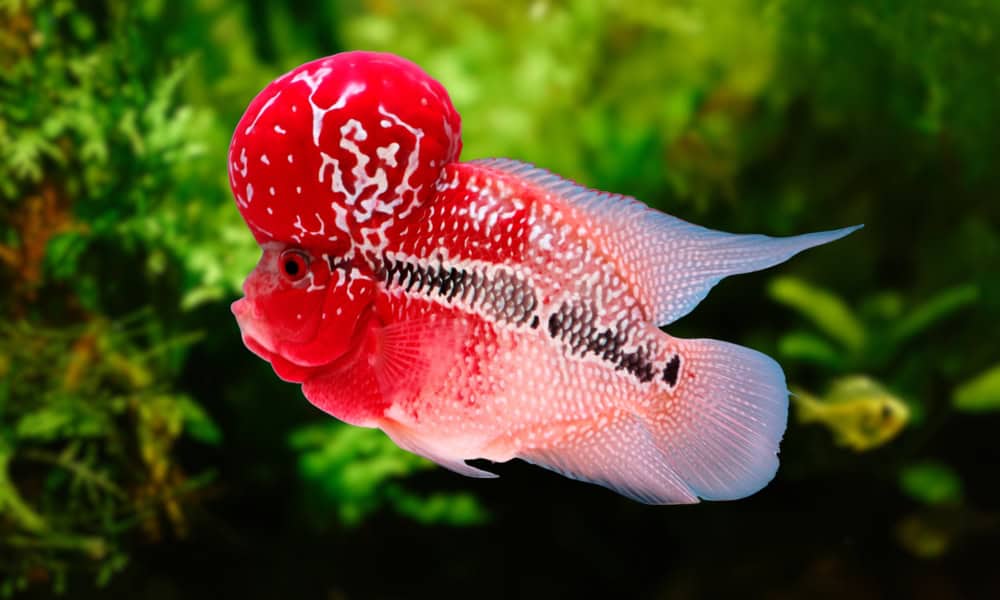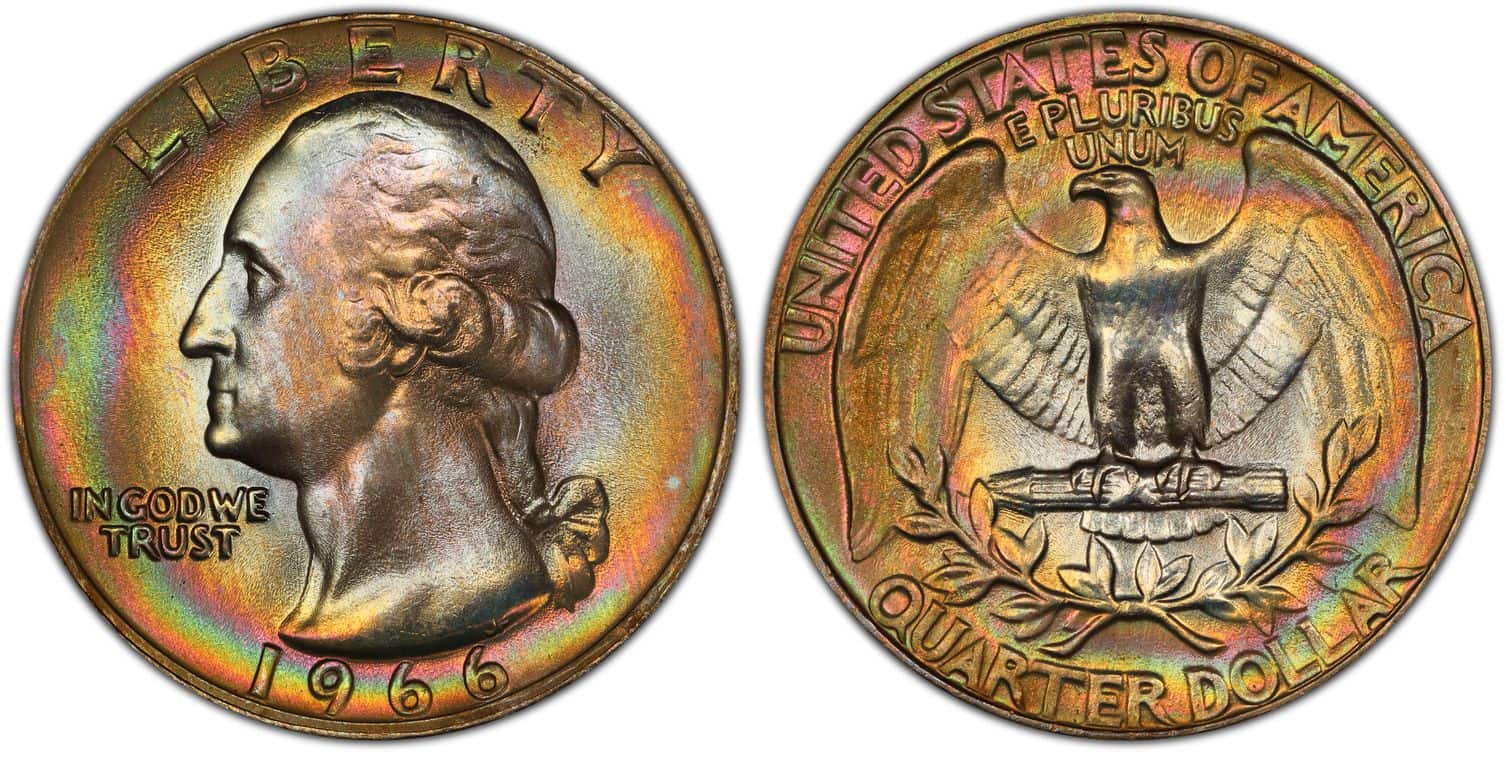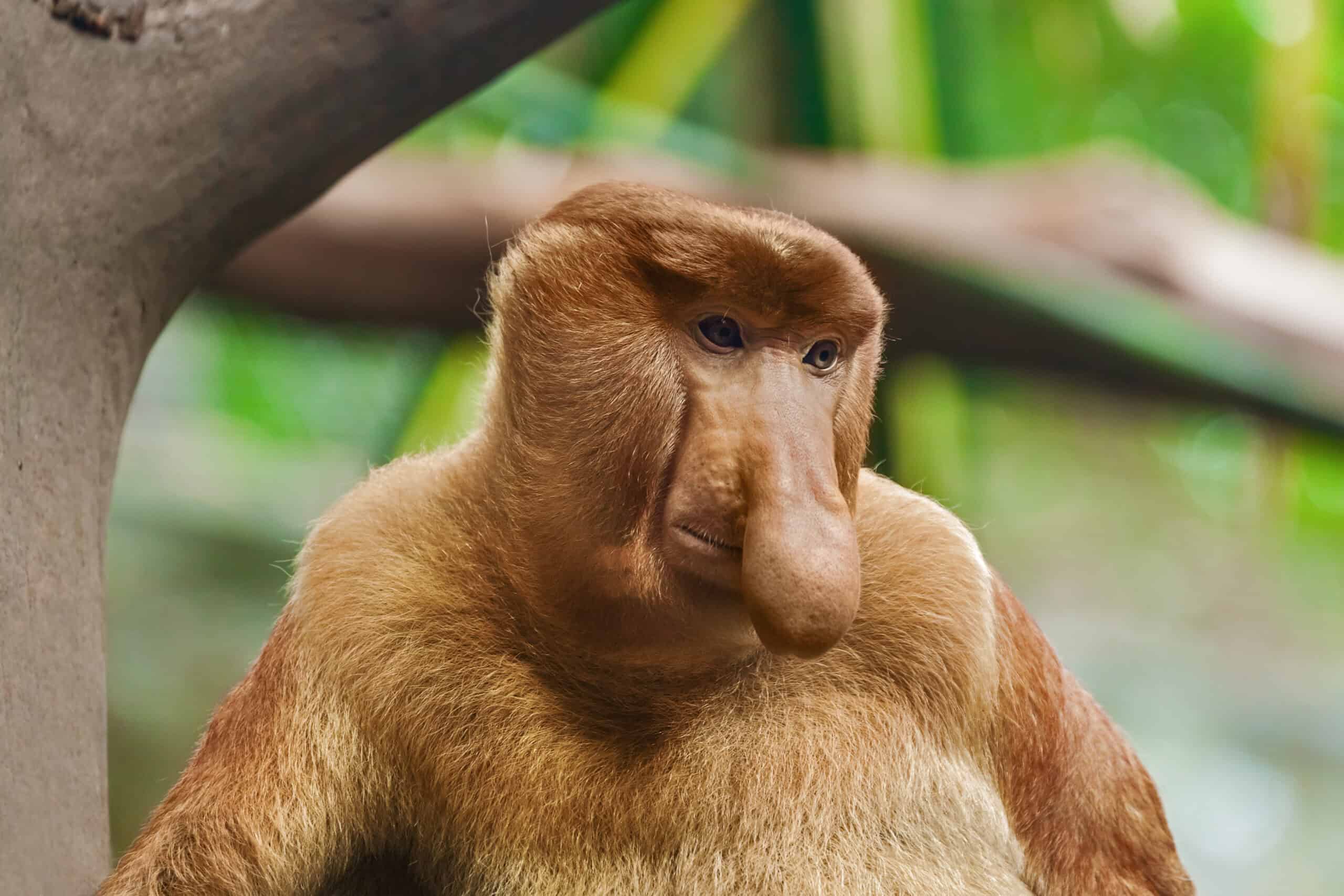The world of flora is filled with extraordinary and peculiar flowers that captivate our imagination with their unusual shapes, vibrant colors, and unique adaptations. From blossoms that mimic the appearance of animals to those that emit unexpected scents, these bizarre flowers showcase nature’s creativity and diversity. Exploring these fascinating blooms reveals not only their beauty but also the incredible evolutionary strategies they employ for survival and reproduction. Here are some of the most bizarre flowers found around the globe, each with its own captivating story.
Corpse Flower (Amorphophallus titanum)
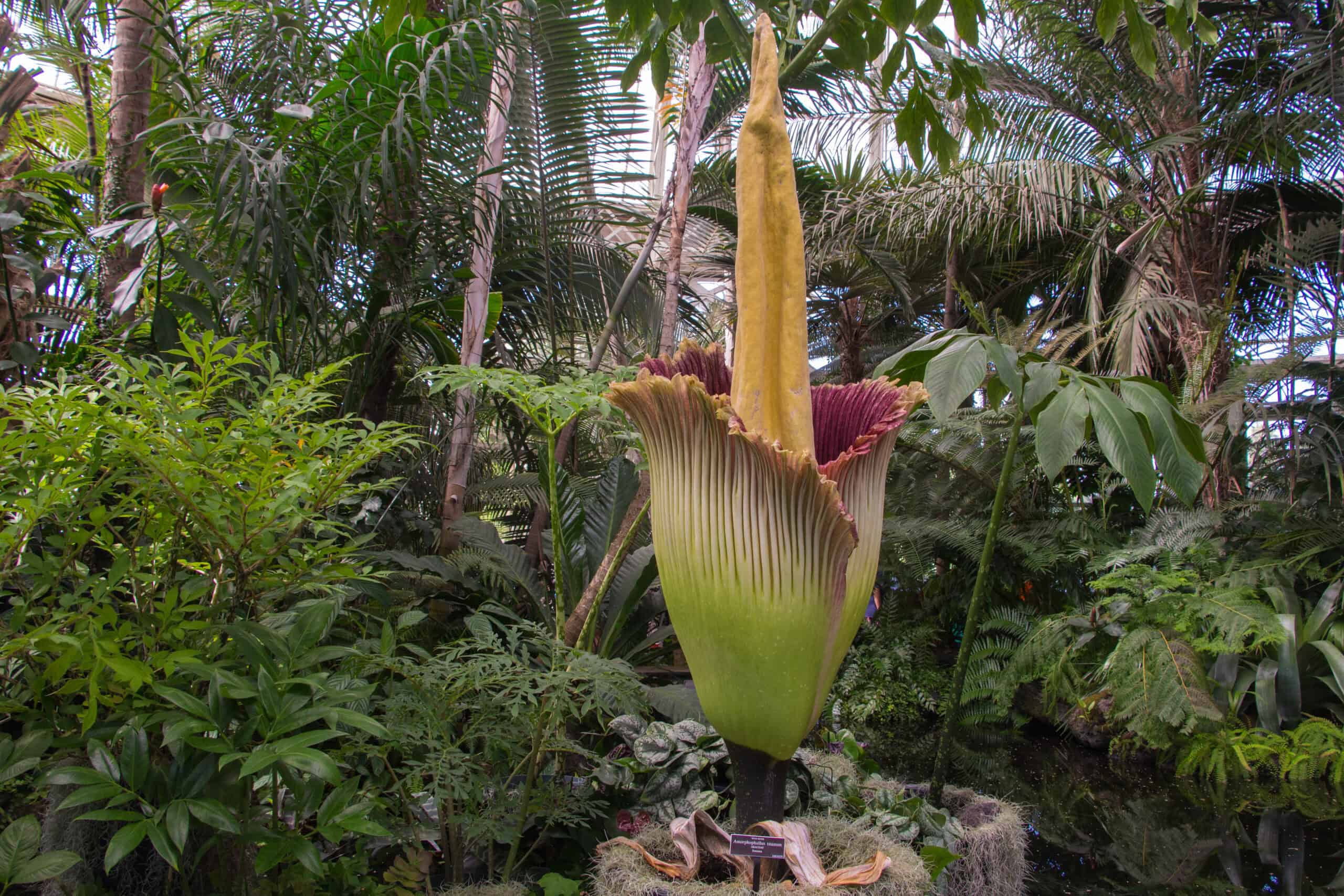
The Corpse Flower is renowned for its overpowering odor, resembling that of rotting flesh. Native to the rainforests of Sumatra, Indonesia, this gigantic bloom can reach up to 10 feet in height. Its smell attracts carrion beetles and flesh flies for pollination. Despite its unpleasant scent, the flower’s rare bloom cycle makes it a fascinating spectacle. When it blooms, it becomes a significant event, drawing crowds of curious onlookers.
Parrot Flower (Impatiens psittacina)
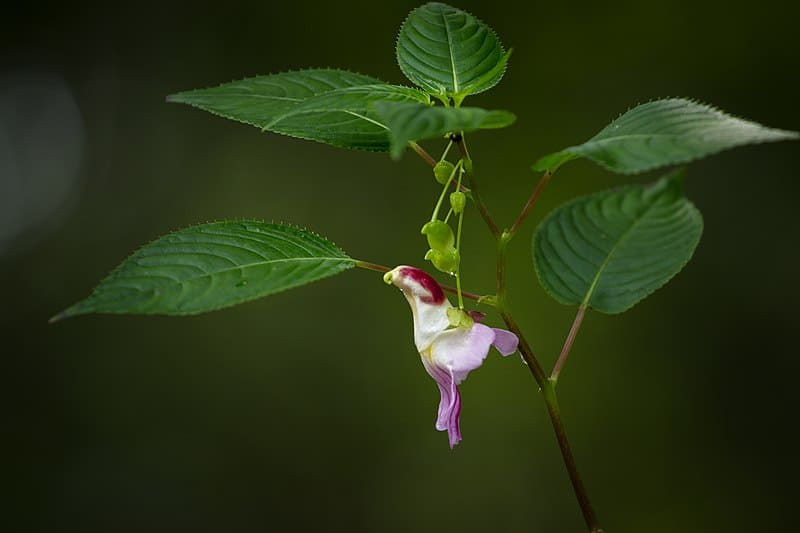
Found in the hills of northern Thailand, Myanmar, and parts of India, the Parrot Flower looks strikingly like a parrot in flight. Its vibrant petals are predominantly pink and purple, mimicking the bird’s plumage. This rare flower is difficult to cultivate outside its natural habitat, adding to its allure. Its shape and color make it a favorite among plant enthusiasts. Due to its uniqueness, it is protected under Thai law, and exporting it is prohibited.
Hooker’s Lips (Psychotria elata)
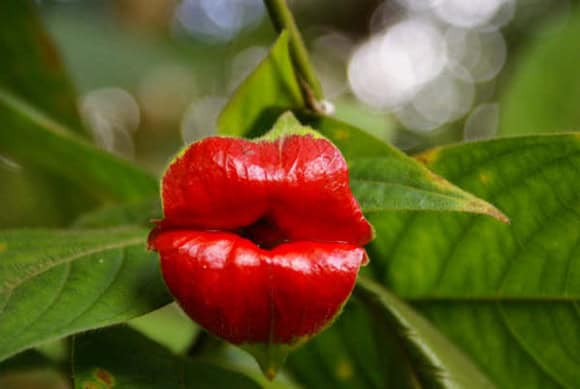
This flower from the tropical rainforests of Central and South America has evolved to look like bright red, luscious lips. The striking resemblance to puckered lips is a strategy to attract pollinators, such as hummingbirds and butterflies. The vibrant red bracts are only temporary, giving way to small white flowers. Its unusual appearance has earned it many admirers. However, deforestation threatens its habitat, making conservation efforts crucial.
Bat Flower (Tacca chantrieri)

Native to the tropical regions of Southeast Asia, the Bat Flower is known for its bat-like appearance with long, flowing whiskers. Its dark purple to black color gives it an eerie look. This exotic flower can grow whiskers up to 28 inches long, adding to its otherworldly charm. It thrives in shady, humid environments, making it a unique addition to any garden. The Bat Flower’s mysterious allure captivates plant collectors and enthusiasts alike.
Bleeding Heart (Lamprocapnos spectabilis)

The Bleeding Heart gets its name from the heart-shaped flowers that appear to be dripping with blood. Found in Asia and North America, these flowers bloom in shades of pink, red, and white. The delicate, arching stems and dainty flowers make it a favorite in ornamental gardens. Its unique appearance and romantic symbolism make it a popular choice for Valentine’s Day bouquets. Despite its delicate look, it is a hardy plant that thrives in a variety of climates.
Ghost Orchid (Dendrophylax lindenii)
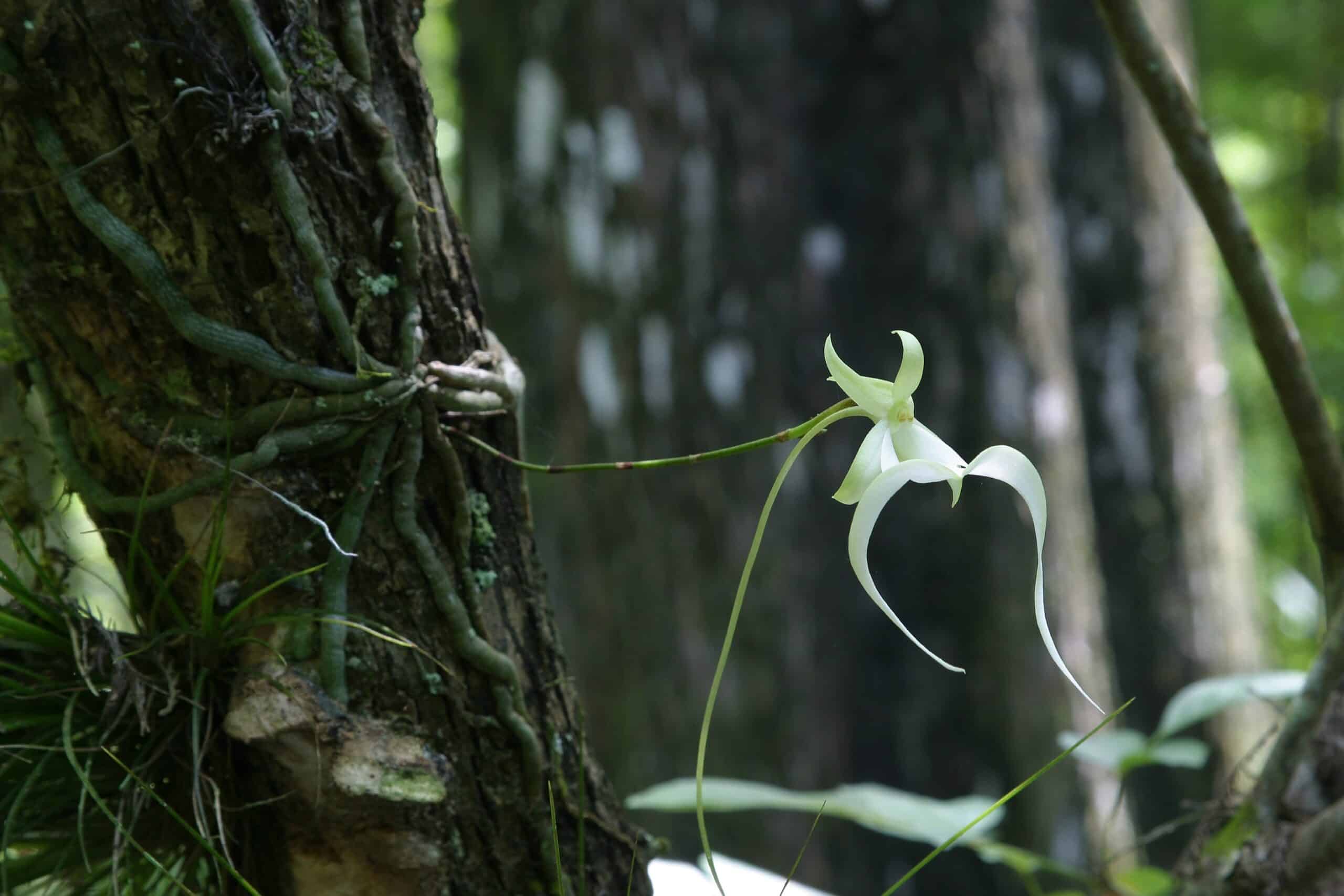
The Ghost Orchid, native to Florida, Cuba, and the Bahamas, is famous for its eerie, ethereal appearance. It lacks leaves and consists of white flowers that appear to float in mid-air, hence the name “Ghost Orchid.” This rare flower blooms sporadically and requires very specific conditions to thrive. Its mysterious beauty and rarity make it highly sought after by collectors. However, it is endangered due to habitat destruction and over-collection.
Monkey Face Orchid (Dracula simia)
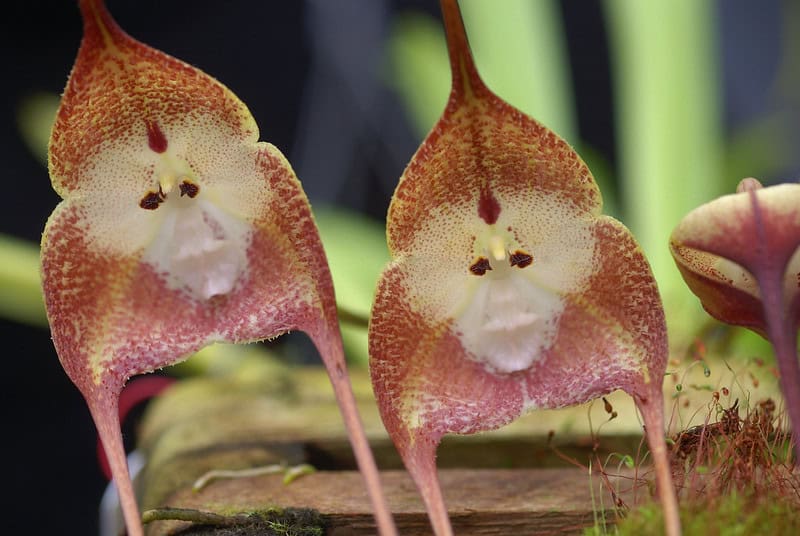
Resembling the face of a monkey, this orchid is native to the cloud forests of Peru and Ecuador. Its flowers feature two dark eyes, a furry nose, and a mouth, creating an uncanny resemblance to a primate. The orchid emits a pleasant citrus fragrance, adding to its appeal. It thrives in cool, moist environments, making it a challenge to grow outside its natural habitat. Its unique appearance and delightful scent make it a favorite among orchid enthusiasts.\
Naked Man Orchid (Orchis italica)
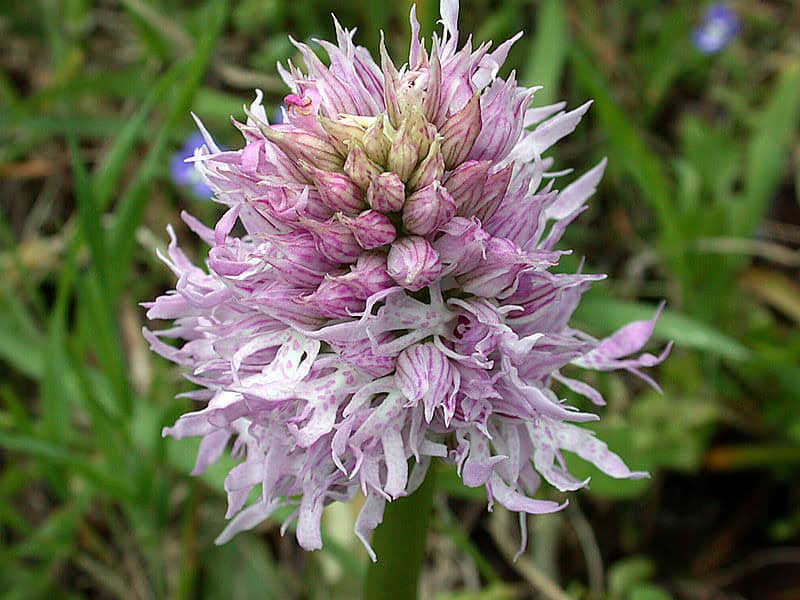
Found in the Mediterranean, the Naked Man Orchid’s flowers resemble tiny, naked men, complete with limbs and even a little hat. The blooms are primarily pink or purple, and they grow in clusters on a tall spike. This quirky flower is known for its unusual shape rather than its scent. It thrives in sunny, grassy areas, often blooming in spring. Its amusing appearance brings joy to those who encounter it.
Swaddled Babies (Anguloa uniflora)
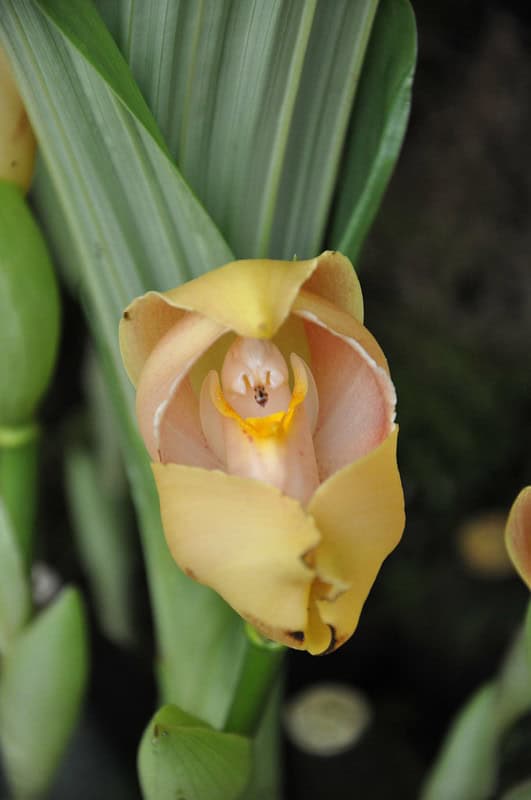
Native to the Andes in South America, Swaddled Babies orchids resemble tiny infants wrapped in blankets. These flowers bloom in shades of white and yellow, and their unique shape makes them highly distinctive. They grow best in cool, moist conditions, often found in high-altitude cloud forests. Their captivating appearance has made them popular in botanical gardens. However, they are quite rare and difficult to cultivate.
Flying Duck Orchid (Caleana major)
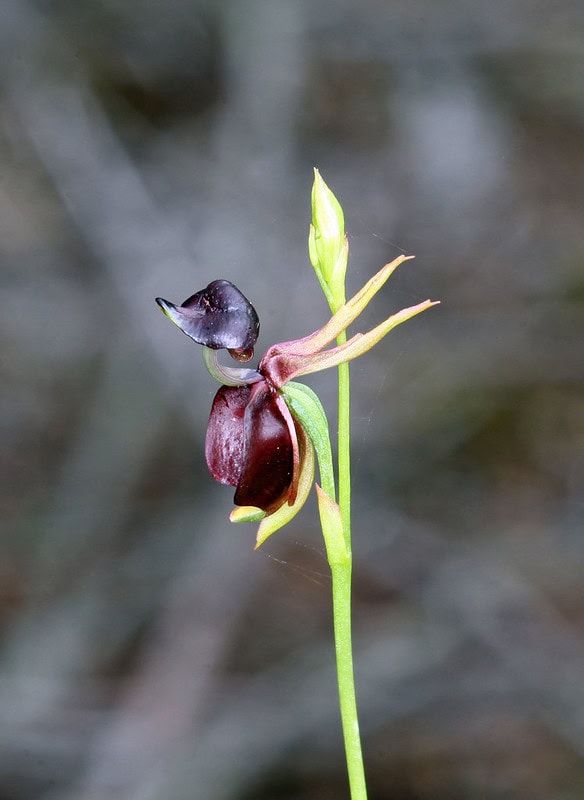
The Flying Duck Orchid, found in Australia, mimics the shape of a duck in flight. Its unusual form helps attract male sawflies for pollination, as they mistake it for a female. This tiny flower is a marvel of evolutionary adaptation. It grows in eucalyptus forests and swamps, thriving in well-drained, sandy soil. Its extraordinary resemblance to a duck makes it a favorite among orchid enthusiasts.
Snapdragon Seed Pod (Antirrhinum)
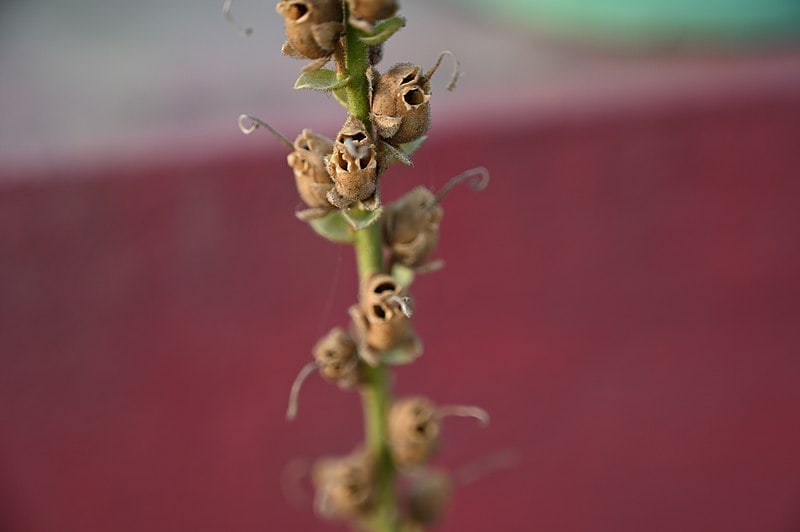
When the flowers of the Snapdragon plant die, they leave behind seed pods that look eerily like tiny skulls. This macabre transformation has earned them the nickname “Skull Flower.” Native to rocky areas of Europe, the Mediterranean, and North Africa, Snapdragons are known for their vibrant blooms during their life cycle. The seed pods’ spooky appearance adds an element of surprise for gardeners. Their dual nature, beautiful in bloom and eerie in seed, makes them fascinating plants.
Devil’s Hand (Chiranthodendron pentadactylon)
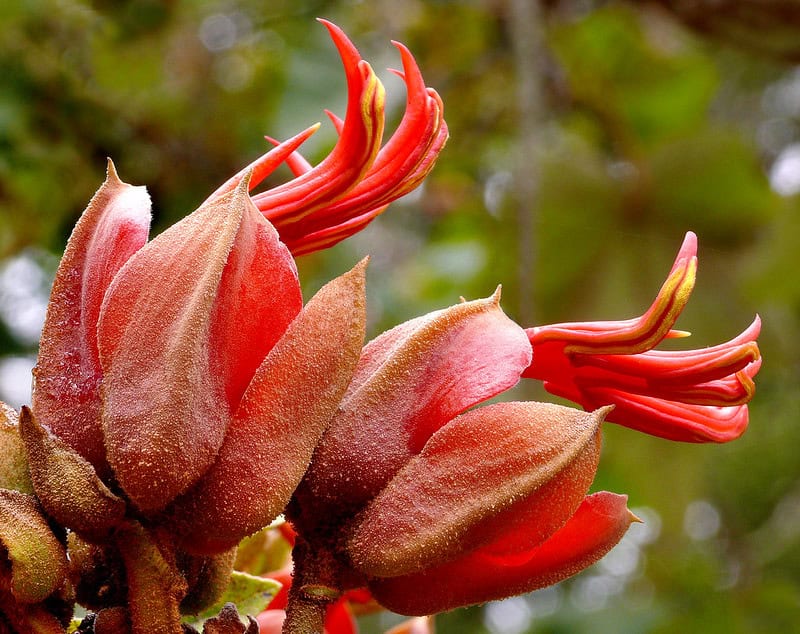
Found in Mexico and Guatemala, the Devil’s Hand tree produces red flowers that resemble a hand with elongated fingers. These bizarre flowers are said to symbolize the devil’s hand, adding to their mystique. The tree has been used in traditional medicine for centuries. Its unique appearance and cultural significance make it an intriguing species. The bright red flowers are not only unusual but also strikingly beautiful.
Passion Flower (Passiflora)
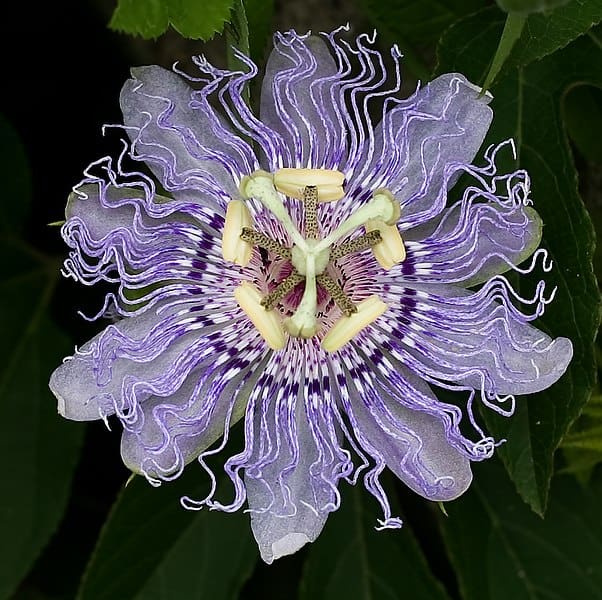
Passion Flowers, native to South America, are known for their complex and alien-like appearance. The intricate structure of their petals and filaments creates a mesmerizing effect. They are named for their symbolism in Christianity, representing the crucifixion of Christ. These flowers attract various pollinators, including bees, butterflies, and hummingbirds. Their unusual beauty and symbolic meanings have made them popular in gardens worldwide.
Sea Poison Tree (Barringtonia asiatica)
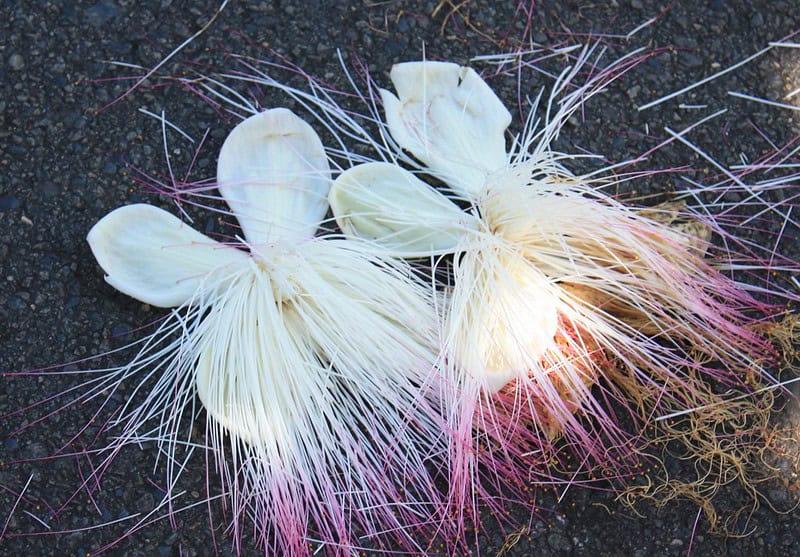
This tree, found in coastal areas of the Indian and Pacific Oceans, produces flowers that look like a burst of fireworks. The large, spherical blooms have long, pink and white stamens that create a stunning visual display. The flowers open at night, releasing a sweet fragrance that attracts bats and moths for pollination. Despite its beauty, the tree’s seeds are highly toxic. Its dual nature of beauty and danger makes it a fascinating plant.
Happy Alien (Calceolaria uniflora)
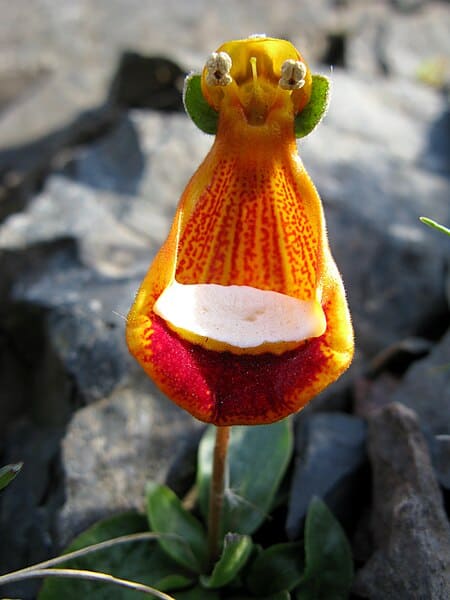
Found in the cold, mountainous regions of southern Patagonia, the Happy Alien flower looks like a smiling alien face. Its vibrant yellow and orange petals with a white lip create a cheerful appearance. This small, hardy plant thrives in harsh, rocky environments. Its unique and whimsical look makes it a delightful discovery. The Happy Alien flower’s resilience and charm captivate botanists and hikers alike.
Blue Passionflower (Passiflora caerulea)
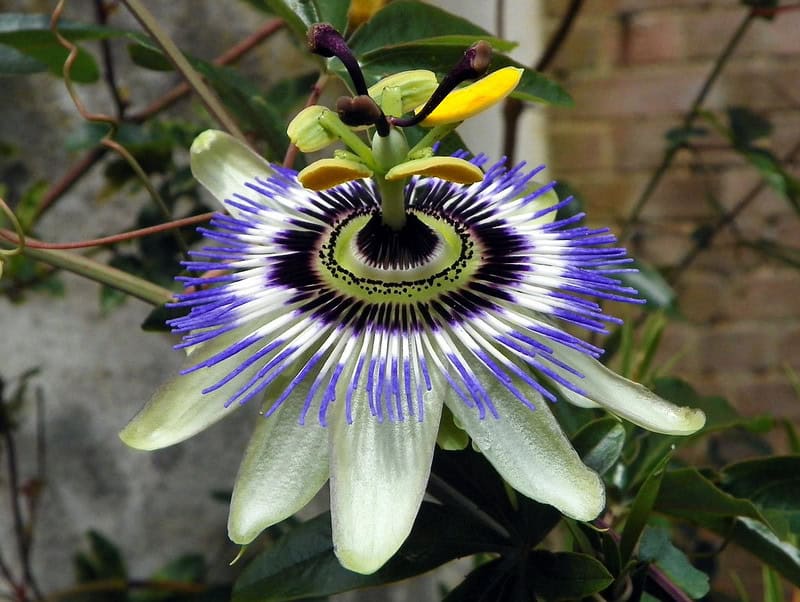
The Blue Passionflower is known for its strikingly intricate design and vibrant colors. Native to South America, its petals form a star-like pattern with blue and white hues. The flower’s unique structure includes a corona of filaments that add to its exotic look. It attracts various pollinators and is often used in herbal medicine. Its complex beauty and versatility make it a favorite among gardeners.
White Egret Orchid (Habenaria radiata)
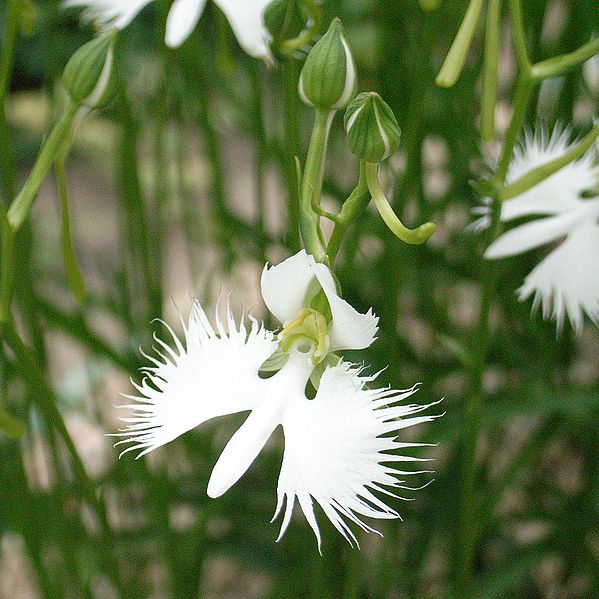
This delicate orchid, native to East Asia, resembles a white egret in flight. The pure white petals with fringed edges mimic the bird’s feathers. It thrives in wet, boggy environments, making it a unique addition to water gardens. The White Egret Orchid’s graceful appearance and rarity make it highly prized among collectors. Its ethereal beauty and resemblance to a bird in motion are truly captivating.
This article originally appeared on Rarest.org.
More From Rarest.Org
Tropical fish are fascinating creatures that add vibrant life to any aquarium. Some species are more common, while others are rare gems, prized by enthusiasts. This article explores tropical fish species ranked by their rarity, highlighting their unique features and origins. Read more.
The 1966 Washington Quarter is made of 75% copper and 25% nickel. This composition has been in use since 1965. However, before 1965, the Washington quarter was made of 90% silver and 10% copper. Read more.
When exploring the animal kingdom, some mammals stand out due to their extraordinary and unusual characteristics. These unique features often seem otherworldly, fascinating biologists and nature enthusiasts alike. Read more.

